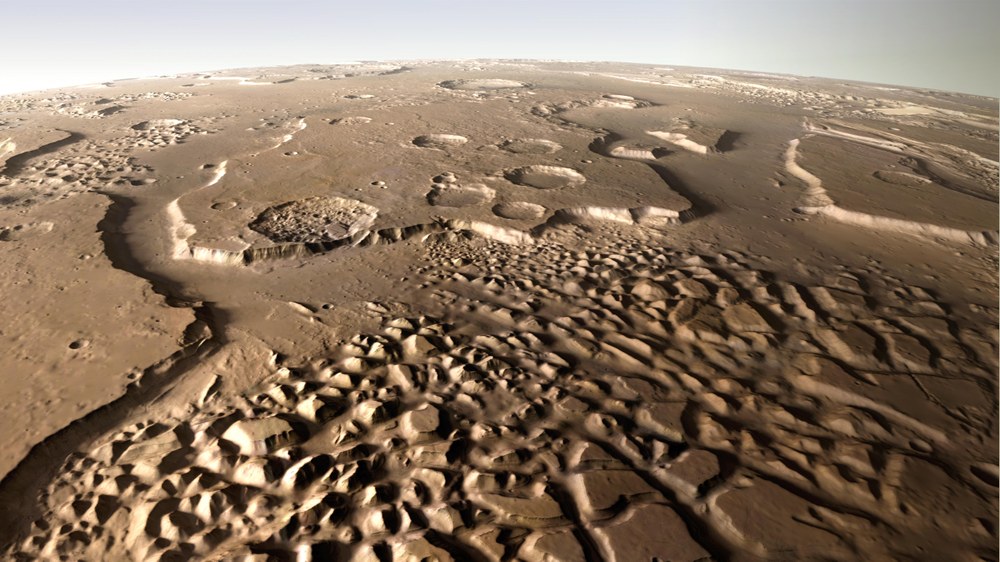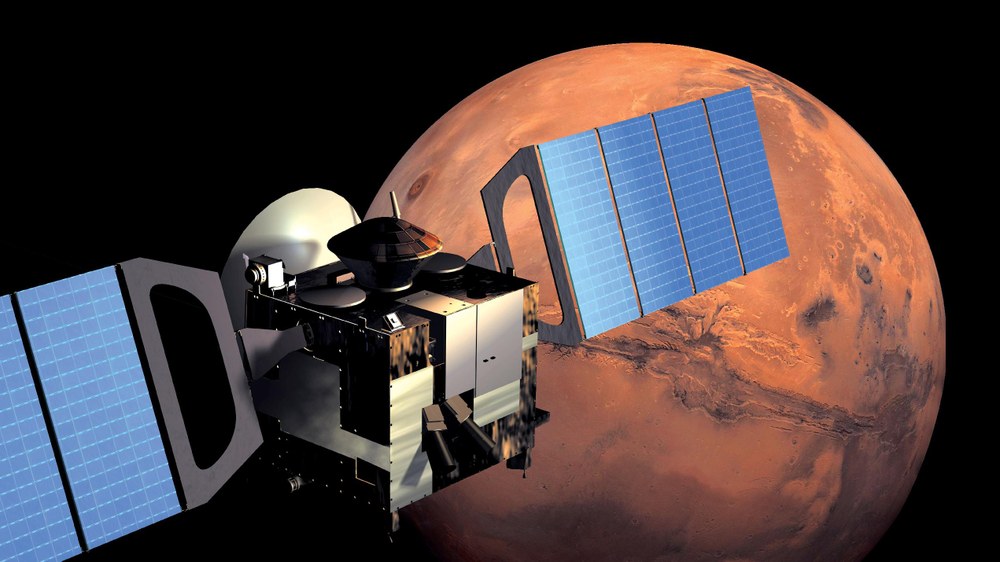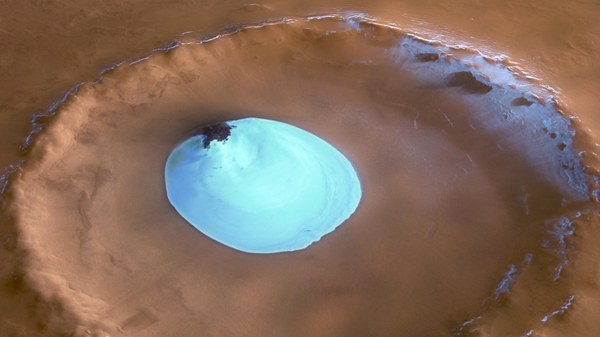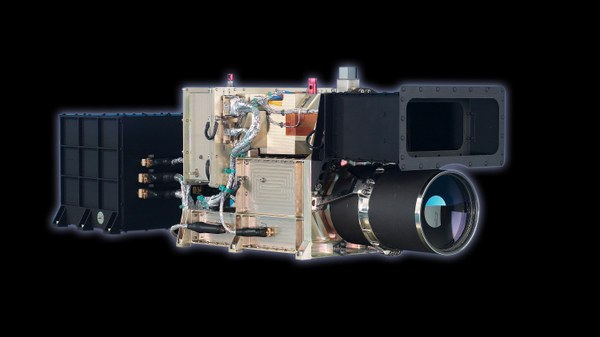Mars Express
The European Space Agency's (ESA) Mars Express mission was launched by a Soyuz/Fregat rocket on 2 June 2003 at 19:45 Central European Summer Time from the Russian space centre at Baikonur, Kazakhstan. The mission supplies Scientists with important new data about the geology, mineralogy and atmosphere of Mars. The search for traces of earlier Mars life, one of the most ambitious goals of the project, provides a large challenge for the scientists.
DLR is making important contributions to Mars Express. The High Resolution Stereo Camera (HRSC) was developed by DLR's Institute of Space Research in Berlin. The camera is mapping Mars in three dimensions in the highest-ever resolution.

The striking landscape of Hydraotes Chaos on Mars
The first HRSC image, which was unveiled to the public in January 2004, showed the Hydraotes Chaos region - a labyrinth of mesas created by the eroding effect of masses of water draining away and ground collapsing to form great voids. Since then, the Mars Express probe has orbited Mars about 19,000 times at different altitudes. As a result, global coverage has seen constant improvement, with image resolutions of down to 12 metres per pixel. The image here shows a view recently acquired by HRSC from the equator looking north over the striking landscape of Hydraotes Chaos with its more than 2000-metre-high table-mountain outliers in the foreground. The outflow channels of Simud Valles (left) and Tiu Valles (right), which are up to 80 kilometres wide and more than 1000 kilometres long, extend as far as the horizon.
News
Loading
All HRSC images since 2010
Search results
Sorting
Loading
Related links
Contact
Daniela Tirsch
Principal Investigator HRSC
German Aerospace Center (DLR)
Institute of Space Research
Rutherfordstraße 2, 12489 Berlin
Ulrich Köhler
German Aerospace Center (DLR)
Institute of Space Research
Public relations
Rutherfordstraße 2, 12489 Berlin







